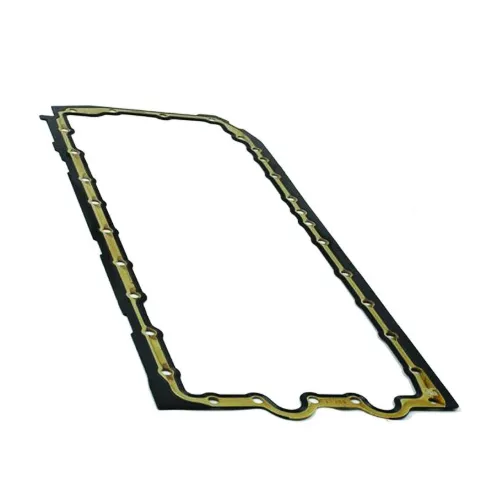Understanding Vital Engine Seals: Key Gaskets in Diesel and Performance Engines
Engine gaskets may be small, but they play an enormous role in keeping vehicles running efficiently and safely. From preventing oil leaks to maintaining proper fluid separation and pressure, gaskets ensure that critical systems perform without interference. Whether you're driving a diesel workhorse or a high-performance car, components like the DT466 oil rail gasket, gasket oil cooler, LT1 oil filter adapter gasket, oil cooler 7.3 Powerstroke gasket, and oil cooler gasket 7.3 are essential to engine health and longevity.

Ignoring a failing gasket can lead to reduced performance, overheating, and even engine failure. Let's dive into the function, importance, and signs of wear for these crucial gaskets.
Gaskets in Diesel Engines: Power and Pressure Control
Heavy-duty diesel engines such as the Navistar/International DT466 and Ford's 7.3L Power Stroke rely on a system of gaskets to maintain oil pressure and temperature balance. Two important components here are the DT466 oil rail gasket and the oil cooler gasket 7.3.
DT466 Oil Rail Gasket
The DT466 oil rail gasket is critical for sealing the high-pressure oil system that powers the injectors. This engine relies on hydraulic pressure to actuate fuel injectors, and any leak in the oil rail can cause starting issues, poor performance, or even a no-start condition.
Symptoms of a failing DT466 oil rail gasket:
Hard or no starts
Loss of injector pressure
Oil leaks near the valve cover
Rough idle or misfires
Replacing this gasket requires removal of the valve cover and careful torqueing to spec, as any uneven sealing can cause leaks again.
Oil Cooler Gasket 7.3 / Oil Cooler 7.3 Powerstroke Gasket
The 7.3L Power Stroke diesel engine features a separate oil cooler to maintain optimal operating temperature. The oil cooler gasket 7.3 and oil cooler 7.3 Powerstroke gasket ensure that coolant and oil remain in their respective passages without mixing. Over time, these gaskets can degrade due to constant exposure to heat and pressure.
Common signs of failure:
Oil in the coolant reservoir (or vice versa)
External oil leaks along the oil cooler body
Engine overheating
Low oil pressure
Replacing these gaskets involves removing the oil cooler assembly from the engine block, cleaning surfaces thoroughly, and reinstalling with fresh seals.
Performance Engine Gaskets: Sealing Under Stress
Performance vehicles often operate under higher RPMs and temperatures, placing extra strain on engine seals. A good example is the LT1 oil filter adapter gasket, which is small but essential for leak-free performance.
LT1 Oil Filter Adapter Gasket
The LT1 engine, popular in Chevrolet performance cars, uses an oil filter adapter mounted to the block to route oil to the filter. The LT1 oil filter adapter gasket seals this junction, preventing leaks and ensuring proper oil flow through the filter before it circulates back into the engine.
When this gasket fails, oil may seep out around the adapter, especially after startup or hard driving. Symptoms include:
Oil leaks at the rear of the oil pan or near the adapter
Low oil levels
Oil pressure warning light
This gasket is often overlooked during engine builds or oil system upgrades but plays a key role in preserving lubrication integrity.
Gasket Oil Cooler: A Universal Seal for Heat Exchangers
Across all types of engines—gasoline and diesel alike—the gasket oil cooler serves as a universal seal between the oil cooler and other engine components. These gaskets prevent coolant and oil from intermixing and ensure that thermal transfer functions efficiently.
Whether part of an external oil cooler system or integrated within the engine block, the gasket oil cooler must be heat-resistant and precisely fitted. Failure of this gasket can cause:
Internal fluid contamination
Engine overheating
Lubrication breakdown
Sudden coolant or oil loss
Using OEM-quality replacements and torqueing bolts in the correct sequence are critical to ensuring the longevity of this gasket.
From high-pressure diesel systems to precision performance engines, gaskets are the frontline defense against fluid leaks and mechanical failure. Components like the DT466 oil rail gasket, gasket oil cooler, LT1 oil filter adapter gasket, oil cooler 7.3 Powerstroke gasket, and oil cooler gasket 7.3 may not be visible during everyday driving—but they are working hard under extreme conditions.
Regular maintenance, early diagnosis of leaks, and replacing gaskets with high-quality parts will help keep your vehicle running at its best, whether you’re hauling heavy loads or enjoying a high-revving sports car.
-
High-Quality Seal 12x22x5 for Industrial & Automotive Use | YJM Seal
Nkhani Nov.25,2025
-
Seal 12x20x5: Precision Radial Shaft Seals for Industrial Reliability
Nkhani Nov.24,2025
-
Seal 12x18x5: Essential Guide to Specifications, Applications & Vendors
Nkhani Nov.24,2025
-
Understanding Seal 12 20 5: Applications, Specifications & Industry Insights
Nkhani Nov.23,2025
-
Durable Oil Seal 85x110x12 – Reliable Sealing Solutions for Industry
Nkhani Nov.23,2025
-
Durable and Precise Oil Seal 75x95x10 for Efficient Machinery | YJM Seal
Nkhani Nov.22,2025
-
Durable Oil Seal 75x100x10 for Reliable Industrial Performance | YJM Seal
Nkhani Nov.22,2025
Magulu azinthu















